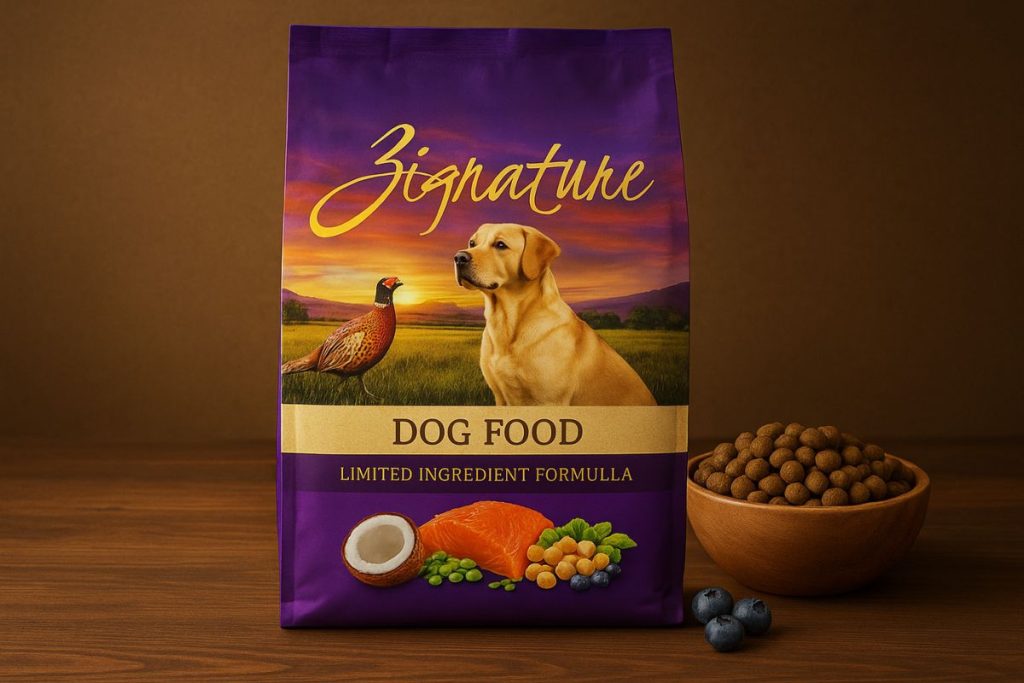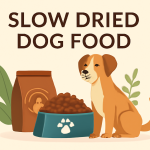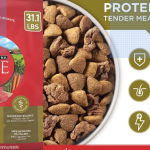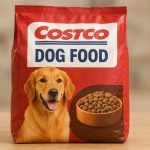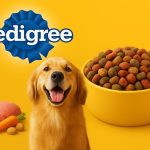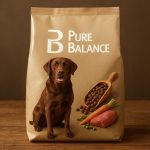Meta Title: Grain Free Dog Food: Zignature Allergy-Friendly Recipes \nMeta Description: Grain free dog food fans: discover Zignature’s allergy-friendly recipes using single proteins (salmon, kangaroo & more). Compare Instinct & Farmina options.
Grain Free Dog Food: Zignature’s Allergy-Friendly Recipes
Grain free dog food can be a game-changer for dogs suffering from food allergies or sensitivitieszignature.comavma.org. While true food allergies affect only about 0.2% of dogsavma.org, many pets experience chronic itching, GI upset or skin issues due to intolerances that may improve with a change in dietzignature.com. In fact, grain-free diets now represent over 40% of U.S. dry dog foodspmc.ncbi.nlm.nih.gov, and roughly half of dog owners believe grain-free is healthierpmc.ncbi.nlm.nih.gov. Zignature dog foods are engineered specifically for food-sensitive pets: they offer high-quality limited-ingredient, single-protein formulas (e.g. lamb, kangaroo, trout) with no common allergensonlynaturalpet.com. These grain-free, hypoallergenic recipes (often with added superfoods and probiotics) give dogs a nutritious diet that tends to reduce flare-ups like loose stools and itchy skinzignature.comonlynaturalpet.com. In this guide, we’ll explore how Zignature’s allergy-friendly recipes fit within the broader context of grain free dog food options (including salmon dog food formulas), and compare them to other brands like Instinct, Farmina, and Open Farm to help you choose the best diet for your pup.
Grain-free dog food kibble in a bowl, illustrating Zignature’s focus on premium single proteins and no common allergensonlynaturalpet.comzignature.com. Each recipe—from Lamb to Trout to Salmon—is crafted for dogs with food sensitivities, featuring only one novel animal protein and no chicken, corn, wheat, soy or dairyonlynaturalpet.comonlynaturalpet.com. These limited-ingredient meals include added superfoods like flaxseed and alfalfa for extra nutrientsonlynaturalpet.comonlynaturalpet.com.
Understanding Dog Food Allergies & Grain-Free Diets
Food sensitivities in dogs often manifest as skin and digestive issues. Common symptoms include:
- Chronic itching, scratching or hot spots (commonly on the paws, ears or belly)zignature.com.
- Digestive upset: vomiting, diarrhea, constipation or excess gaszignature.com.
- Recurring ear or skin infections despite treatmentavma.org.
Veterinary sources note that the most frequent food allergens in dogs are proteins like beef, chicken, dairy, wheat and lambmerckvetmanual.com. True food allergies are quite rare (affecting only about 0.2% of dogsavma.org), so many pets with “allergy” symptoms actually react to sensitivities or environmental factors. Grain-free diets tackle these sensitivities by substituting novel proteins (e.g. salmon, kangaroo, goat) and excluding common grains and fillersonlynaturalpet.commerckvetmanual.com. In fact, many owners report that switching to a grain-free, limited-ingredient diet significantly reduces their dogs’ allergy symptomszignature.com. For example, pet owners have observed healthier coats and skin (less dryness/flaking) and even fresher breath once dogs switch to grain-free dietszignature.com.
Zignature’s Limited-Ingredient, Grain-Free Formulas
Zignature is known for its limited ingredient, hypoallergenic dog foods. Each formula is grain-free and contains only one premium animal protein plus a few wholesome ingredientsonlynaturalpet.comonlynaturalpet.com. For example, the Lamb recipe (New Zealand lamb) lists just lamb, lamb meal, chickpeas and vegetables — with no chicken, corn, wheat, soy, dairy or other common allergensonlynaturalpet.com. This Lamb formula provides nutrients like vitamin B6, phosphorus and manganese naturallyonlynaturalpet.com. Beyond these single-protein formulas, Zignature’s entire line excludes filler ingredients: no corn, wheat, soy, rice or potatoesonlynaturalpet.com. They also avoid artificial preservatives, relying on vitamin E and rosemary extract for freshness. In short, Zignature follows a “meat-first” philosophyzignature.com to deliver a high-protein, minimally-processed diet.
Zignature’s other grain-free dry formulas include options like Kangaroo & Pumpkin or Pork & Pumpkin, each with a single novel protein and fiber-rich pumpkinonlynaturalpet.comonlynaturalpet.com. All recipes are formulated by a team of PhD nutritionists and meet AAFCO standards for complete nutritionzignature.comzignature.com. In fact, the company states: “All Zignature products are formulated by an expert team of PhD board-certified companion animal nutritionists… thoroughly researched, and extensively tested to deliver complete and balanced nutrition”zignature.com. This means a Zignature grain-free diet is 100% nutrient-adequate for your dog’s life stage.
Zignature’s Trout & Salmon formula is essentially a high-end salmon dog food: it provides omega-3-rich fish proteins for skin and coat health. The company highlights that “both trout and salmon are uncommon proteins in standard kibble, making this blend an excellent novel option for dogs prone to allergies”zignature.com. Indeed, the salmon & trout blend is naturally high in EPA and DHA fatty acids, which promote a glossy coat and healthy skinzignature.com. These protein-rich bowls often include omega-3 fish oils and flaxseed for healthy skin and jointszignature.com, along with easily digestible proteins. Many owners find that switching to a novel protein, limited-ingredient diet (Zignature, Instinct, etc.) leads to dramatic improvements in allergy symptomszignature.comonlynaturalpet.com.
A dog enjoying a nutritious bowl of grain-free dog food, reflecting Zignature’s protein-rich, novel-ingredient approachonlynaturalpet.com. These diets typically include omega-3-rich fish oils and flaxseed for healthy skin and jointszignature.com, along with high-quality proteins. Many owners find that switching to a limited-ingredient diet (Zignature, Instinct, etc.) leads to dramatic improvements in allergy symptomszignature.comonlynaturalpet.com.
Choosing & Transitioning to a Grain-Free Diet
Before changing your dog’s food, consult your veterinarian to confirm that allergies or food sensitivities are indeed the cause. If you do move to a grain-free diet, follow these guidelines:
- Vet guidance: Get a professional diagnosis first. An elimination trial (feeding only one new protein and carbohydrate) is often used to confirm a food allergy. True food allergies are quite rare (~0.2% of dogsavma.org), but dietary changes can still relieve many chronic skin or GI problems.
- Read labels: Look for Limited Ingredient Diet (LID) on the bag. The first ingredient should be a named meat (e.g. Lamb, Kangaroo) and the rest of the list should be free of grains and common fillers. Zignature labels clearly state each ingredient and omits all known allergensonlynaturalpet.com.
- Transition slowly: Gradually mix the new food with the old over 5–7 dayszignature.com. Sudden changes can upset the stomach. Keep fresh water available at all times.
- Balanced nutrition: Ensure the new diet is AAFCO-complete for your dog’s life stage. Good grain-free kibbles will contain alternate carbs (peas, potatoes, oats, or quinoa) and meet nutrient requirements. Not all grain-free diets are equal – prioritize recipes with whole-food ingredients like Zignature’s.
- Heart health: Note that grain-free diets were scrutinized by an FDA report in 2018 for a possible link to canine dilated cardiomyopathy (DCM)pmc.ncbi.nlm.nih.gov. Current thinking is that this issue was more related to recipe formulation (high legumes/low taurine) than the absence of grains alone. Nevertheless, choose diets that include taurine and essential nutrients, and discuss any heart concerns with your vet.
- Monitor results: Watch for positive changes (better coat, firmer stool, less scratching) over several weeks. If your pet’s symptoms do not improve, they may need a different protein or a medical evaluation.
- Avoid extras: For the trial period, do not feed other treats or human food. Hidden ingredients (soy, corn, dairy) can confuse the test.
- Entice picky eaters: To help a reluctant dog transition, try adding a bit of warm water or low-sodium bone broth to the new food, then remove it after 10–15 minutes. Some owners use a small amount of plain pumpkin or a vet-approved hypoallergenic topper during the switch.
Treat a grain-free diet change as an elimination trial: once you rule out other causes, feeding a single-protein, grain-free formula can reveal if food was the issue. Zignature even suggests owners “try switching your dog to grain-free dog food and see if symptoms subside”zignature.com. Just remember to keep the overall diet balanced and continue consulting your veterinarian throughout the process.
Other Grain-Free Allergy-Friendly Dog Foods
Besides Zignature, several premium brands offer grain-free, limited-ingredient diets for sensitive dogs:
Instinct Limited Ingredient Diet
Instinct’s LID (Limited Ingredient Diet) line provides grain-free formulas with only one meat protein and one vegetableinstinctpetfood.com. For example, their Lamb & Peas recipe is made with grass-fed lamb and peas, and excludes grains, dairy, eggs and legumesinstinctpetfood.com. Instinct also coats each kibble with freeze-dried raw meat for extra protein and flavor, making it a very enticing, protein-packed option. For reference, Instinct’s Lamb LID has 24% protein and 21.5% fatpetland.ca, reflecting its lamb-and-fat-rich formula. The brand (by Nature’s Variety) is known for natural, high-protein nutrition (founded 2002 in Missourinaturesvariety.com) and also offers raw/frozen diet options for owners interested in a raw-fed approach.
Farmina N&D Quinoa Skin & Coat
Farmina’s N&D Quinoa Skin & Coat diets are designed for dogs with skin and coat sensitivities. These grain-free recipes use novel proteins (like wild herring or lamb) along with superfood ingredients such as quinoa, coconut and pumpkin. For instance, the Herring & Quinoa formula contains wild Atlantic herring as the sole meat and is a guaranteed limited-ingredient diet (no chicken)farmina.com. It’s high in Omega-3 fats (with added salmon oil) and avoids common allergens, helping sensitive dogs maintain a healthy coat. Farmina emphasizes science-backed recipes: their parent company has over 50 years of experience in animal nutrition from Italyfarmina.com. In fact, their Ocean line’s packaging even claims “up to 98% ocean-sourced protein”farmina.com. The ingredient panels (e.g. dried blueberry, turmeric, yucca) also show Farmina’s use of antioxidants and digestive aidsfarmina.com.
Open Farm Grain-Free Kibble
Open Farm’s grain-free recipes feature ethically raised single proteins and wholesome vegetables instead of grains. For example, their Grain-Free Beef & Pumpkin formula uses pasture-raised, grass-fed beef mixed with sweet potato and pumpkin, and is 100% free of corn, wheat and soyopenfarmpet.com. The company also offers lamb, turkey, chicken and even salmon versions. Open Farm emphasizes sustainability and transparency – each bag even has a QR code to trace the farm of origin – but each recipe is still formulated to be nutritionally complete. For instance, their Salmon formula guarantees 30% protein and contains about 0.4% combined EPA+DHA (omega-3)openfarmpet.com, reflecting its fish-rich composition. In practice, all these alternative grain-free brands share the goal of minimizing allergens. Instinct and Farmina focus on novel proteins and added nutrients (raw pieces or superfood additives), while Open Farm highlights humanely sourced meats. The best choice is the one whose ingredients best match your dog’s specific needs.
Frequently Asked Questions
What is grain-free dog food?
Grain-free dog food contains no traditional grains like wheat, corn, rice or soy. Instead, it relies on higher-quality proteins and alternate carbs (peas, potatoes, chickpeas or lentils)pmc.ncbi.nlm.nih.gov. Grain-free kibbles have grown popular; they make up over 40% of U.S. dry dog foodspmc.ncbi.nlm.nih.gov. These diets can help pets with grain intolerances by removing a common set of potential triggers. From an evolutionary standpoint, dogs’ digestive systems are geared towards meat – they have “little support for breaking down grains”zignature.com – which may explain why some dogs do better without grains. Note: Even grain-free diets must be complete and balanced. AAFCO formulations still apply, and the food should contain a mix of proteins, fats, vitamins and minerals just like any other kibble.
Is grain-free dog food good for dogs with allergies?
Many allergy-prone dogs do well on grain-free diets, but it depends on the ingredients. Grain-free removes one class of ingredients, but most dogs are more commonly allergic to proteins (beef, chicken, dairy, etc.)merckvetmanual.com. The most effective allergy diets are both grain-free and limited-ingredient (single protein). In practice, switching a sensitive dog to a grain-free formula with a novel protein often dramatically reduces symptomszignature.com. For example, a dog allergic to chicken might improve on a lamb-only diet. Always consult your vet: they may recommend an elimination diet in a structured way to pinpoint the exact trigger. Grain-free can be a tool in this trial, but it’s not a cure-all – it only helps if grains were part of the problem.
What makes Zignature dog food allergy-friendly?
Zignature foods are formulated for dogs with sensitivities. Each recipe features a single novel protein (such as Kangaroo, Lamb, Trout or Duck) and a minimal ingredient listonlynaturalpet.comonlynaturalpet.com. Crucially, none of their formulas contain common allergens like chicken, beef, corn, wheat, soy or dairyonlynaturalpet.com. They also include nutrient-rich extras (flaxseed, vitamins, alfalfa) and added probiotics for digestiononlynaturalpet.comzignature.com. This controlled approach ensures your dog gets balanced nutrition without extra triggers. In short, Zignature’s “meat-first” philosophyzignature.com gives you transparency: you know exactly what your dog is eating. Many owners find that Zignature diets noticeably reduce itchy skin and stomach issues in sensitive dogs.
How do Zignature, Instinct, Farmina and Open Farm compare?
All of these brands offer premium grain-free diets, but each has its own focus. Instinct’s LID formulas (like Lamb & Peas) use a single meat and one carb (peas), plus raw-coated kibbles for extra flavorinstinctpetfood.com. Farmina’s N&D line uses novel proteins and “superfood” ingredients (quinoa, coconut, pumpkin) to target specific issues like skin and coatfarmina.com. Open Farm emphasizes ethically-sourced, single proteins (beef, chicken, lamb, salmon) with simple carbs (pumpkin, sweet potato)openfarmpet.com. Nutritionally they are all complete diets, but their ingredient philosophies differ (frozen/raw components vs. antioxidant additives vs. traceable sourcing). Ultimately, the “best” diet is the one your dog digests well: look at ingredient lists side by side and choose formulas that avoid your dog’s triggers.
How long should I try a grain-free diet?
To evaluate a new food properly, feed only that diet (and a few approved treats) for at least 8–10 weeks. Veterinary studies indicate around 10 weeks may be needed to identify most food sensitivitiesmerckvetmanual.com. It takes time for old allergens to clear the body and for symptoms (itching, digestive upset) to fully subside. So be patient: a change may not show results for a month or more. During this time, monitor your dog’s coat, stool and energy. If after 10–12 weeks you see no improvement, or if new issues arise, consult your vet – you may need a different formula or further testing.
What is a limited ingredient (LID) diet?
A limited ingredient diet (LID) is formulated with very few components to minimize the chance of triggering an allergy. Typically it features only one animal protein and one carbohydrate (like peas or pumpkin). Both Zignature and Instinct market LID formulas. The idea is that by keeping the list short, it’s easier to avoid hidden allergens and identify the culprit if symptoms persist. In practice, LIDs are often recommended as the first step in an elimination diet, making diet trials simpler to manage.
Should I feed my puppy grain-free dog food?
Grain-free diets can be suitable for puppies if formulated for growth. Zignature, for example, offers a Lamb & Rice Puppy recipe that meets AAFCO growth standardszignature.com and includes DHA for brain development. As long as the formula is complete for a puppy, the absence of grains is not harmful. The key is to always use a puppy-specific formula – these have higher protein, fat and balanced minerals to support growing bones. Grain-free puppy foods work similarly to adult diets for sensitive pups, but ensure you follow the feeding guidelines for your puppy’s age and breed size.
Are grain-free dog foods more expensive?
Often, yes. Grain-free and hypoallergenic diets typically use premium ingredients (novel proteins, meats instead of grains), which can make them pricier than standard kibble. For instance, Zignature and Instinct tend to cost more per pound than basic supermarket brands. However, many owners find the health benefits (less itching, better digestion) can offset the higher price via reduced vet bills or medications. Think of it as an investment: for dogs with allergies, a high-quality food can improve quality of life. That said, you can also look for sales, subscribe-and-save programs, or smaller bag sizes to manage costs while still feeding a specialized diet.
Grain-Free Diet Myths vs. Facts
- Myth: Grain-free diets are healthier for all dogs. Fact: Grain-free formulas are only beneficial if your dog truly has a grain sensitivity. Many healthy dogs digest grains like rice or oats without issue. In fact, some vets worry that removing grains unnecessarily can lead to high-pea/starch diets (like those studied for DCM)pmc.ncbi.nlm.nih.gov. Always base your choice on your dog’s needs, not just a trend.
- Myth: All dogs are allergic to grains or thrive on a grain-free diet. Fact: True grain allergies are rare (~0.2% of dogsavma.org). While dogs descended from carnivores, they’ve adapted to starches over millenniazignature.com. Only dogs diagnosed with grain sensitivity will necessarily benefit from grain-free. Others may see no change.
- Myth: Grain-free means high protein and low carbs automatically. Fact: Not necessarily. Some grain-free recipes use starchy peas or potatoes as the carb source, which can still be high in carbohydrates. Always check the guaranteed analysis. Some grain-free diets are actually higher in fat or fiber instead of protein. Look for foods that balance protein, fat and fiber appropriately for your dog’s lifestyle.
- Myth: Grain-free diets fix skin problems by themselves. Fact: Only if grains were the culprit. Itching and skin issues often stem from protein allergies, fleas, environment or hormonal factors. If a dog’s allergy is to beef, for example, switching to a corn-free diet won’t help. Grain-free can help with grain intolerance, but it’s not a universal cure for all allergieszignature.com.
- Myth: “Hypoallergenic” dog food just means grain-free. Fact: The term “hypoallergenic” isn’t officially regulated for pet foods. Truly hypoallergenic diets (like hydrolyzed protein foods) are rare and usually veterinary-prescribed. Zignature calls its diets “hypoallergenic” because of the limited ingredients, but their proteins are still intact (not hydrolyzed)onlynaturalpet.com. In other words, “hypoallergenic” on a bag usually means “claims to avoid common allergens,” not a guarantee.
By separating myth from reality, you can make a more informed choice about grain-free diets and avoid marketing hype.
Current Trends and Controversies
Grain-free diets have become a major trend in pet nutrition. Sales of grain-free dog foods have skyrocketed – one industry report found a 221% growth in grain-free formula sales over a recent five-year spanpmc.ncbi.nlm.nih.gov, and grain-free options now represent over 40% of the marketpmc.ncbi.nlm.nih.gov. This popularity is driven in part by owner perception: about half of surveyed pet owners believe grain-free diets are healthier for their dogspmc.ncbi.nlm.nih.gov.
However, veterinary experts urge a balanced perspective. Grains like rice, oats and barley can be nutritious sources of fiber and energy for most dogs, so they are not inherently bad. True food allergies to grains are rareavma.org, so many vets recommend grain-free (especially novel-protein) diets mainly as part of an elimination trial when allergies are suspected.
In 2018, the FDA investigated a possible link between grain-free diets and canine dilated cardiomyopathy (DCM)pmc.ncbi.nlm.nih.gov. The evidence was inconclusive, but it did prompt warnings to ensure grain-free diets remain complete (particularly in taurine). Brands like Zignature reassure buyers by formulating with taurine-rich proteins and added supplements.
For now, the takeaway is that grain-free diets can offer benefits for some dogs, but they should be chosen based on individual needs rather than hype. Always evaluate the specific ingredients and nutritional profile of any formula (grain-free or not), and consult your vet if you have concerns about heart health or nutritional balancepmc.ncbi.nlm.nih.govavma.org.
Common Ingredients in Grain-Free Recipes
Grain-free dog foods often rely on specific ingredient categories to replace traditional grains:
- Novel or single proteins: These include fish (salmon, trout, whitefish), lamb, kangaroo, pork, duck or rabbit. Zignature uses these to avoid common proteinsonlynaturalpet.com.
- Legumes: Peas, lentils and chickpeas frequently replace grains as carbohydrate sources. They provide fiber and some proteinonlynaturalpet.com, but can occasionally be allergenic for certain dogs.
- Tubers: Potatoes and sweet potatoes are common carbs in grain-free kibbles. Sweet potato adds fiber and beta-carotene; regular potato is starchy but digestible. (Zignature’s Lamb formula, for instance, includes sweet potato for starch.)
- Vegetables & Fruits: Pumpkin (fiber, vitamin A) is often added, especially in limited-ingredient diets. Other examples include carrots, blueberries or spinach for antioxidants. Zignature’s formulas include ingredients like flaxseed, carrots and alfalfa for extra nutritiononlynaturalpet.comonlynaturalpet.com.
- Fat Sources: Many grain-free diets include fish oil, flaxseed or chicken fat for essential fatty acids. These help keep skin and coat healthy. Zignature lists salmon oil or flaxseed oil in most recipeszignature.comonlynaturalpet.com.
Understanding these ingredients can help you choose a grain-free diet that avoids your dog’s specific allergens while still providing balanced nutrition.
Evaluating Dog Food Labels for Allergies
When selecting a grain-free, allergy-friendly dog food, pay close attention to the label:
- Ingredients first: The first ingredient should be a specific meat (e.g. “Lamb”, “Salmon”). Avoid vague terms like “meat by-product” or unlabeled flavors, which could hide allergens.
- Grain-Free and Limited-Ingredient: Verify the label explicitly says “Grain-Free”. If managing allergies, a “Limited Ingredient Diet” (LID) label is a good sign it has minimal additives. Zignature and similar brands clearly list every ingredientonlynaturalpet.com.
- Allergen keywords: Scan the first few ingredients to ensure known allergens (chicken, beef, wheat, soy, corn, dairy) are not present. Zignature labels explicitly state the absence of theseonlynaturalpet.com.
- AAFCO Statement: Look for an AAFCO statement (e.g. “complete and balanced for all life stages”). This confirms the food meets nutritional standards. Zignature claims all life-stage compliancezignature.com.
- Guaranteed Analysis: Check the protein and fat percentages. Allergy diets often have higher protein (20–30% or more). Zignature’s recipes usually list around 30% proteinonlynaturalpet.comonlynaturalpet.com. Also ensure adequate fat (10–20%) and fiber (for digestion).
- Manufacturer transparency: Trusted brands often provide detailed ingredient origin info on their websites. Zignature and Open Farm are known for transparency in sourcing and formula details.
By carefully reading the label, you can confirm that a grain-free food truly fits your dog’s needs and doesn’t secretly include fillers or allergens. When in doubt, reach out to the pet food company or your veterinarian for clarification.
Brand Spotlight: Key Features
Zignature: Grain-free, single-protein formulas with novel proteins (kangaroo, lamb, trout) as first ingredientsonlynaturalpet.com. Hypoallergenic by design: no chicken, beef, corn, wheat, soy, dairy or potatoesonlynaturalpet.com. Adds probiotic blends and superfoods (flaxseed, fruits) for nutritiononlynaturalpet.com. Life-stage recipes available (e.g., Puppy & Senior) that meet AAFCO standardszignature.comzignature.com. Made in the USA by Only Natural Pet Supply, focusing on high quality.
Instinct: Limited Ingredient Diets (LID) like Lamb & Peas use one protein and pea, grain-freeinstinctpetfood.com. Unique for its freeze-dried raw coating on each kibble – boosting flavor and protein. Also contains added probiotics (Bacillus strains) for gut healthinstinctpetfood.com. Instinct (by Nature’s Variety) is known for natural, high-protein nutrition (founded 2002 in Missourinaturesvariety.com) and offers both kibble and raw diets.
Farmina: The N&D Quinoa Skin & Coat line is designed by Italian nutritionistsfarmina.com. Uses a single novel protein (e.g., Herring) and includes GF ancient grains (quinoa, oats) for digestible carbs. Formulas are rich in Omega-3 (fish oils) and antioxidants (turmeric, blueberries, cranberries)farmina.com for skin health. Farmina emphasizes science-backed recipes: their pet food division originates from a 50+ year-old Italian animal nutrition companyfarmina.com.
Open Farm: Grain-Free kibbles built around ethically raised proteins (grass-fed beef, pasture pork, sustainable salmon). Carbs come from nutrient-dense veg like sweet potato and pumpkin. For example, the Salmon & Pumpkin recipe is 30% protein with 0.4% omega-3sopenfarmpet.com. Open Farm highlights transparency (each bag has a QR code to source farms) and adds ingredients like chickpeas and lentils for fiber. All their recipes are balanced for AAFCO standards.
All of these alternatives share Zignature’s goal of minimizing allergens. Instinct and Farmina focus on novel proteins and added nutrients (raw-coated bits or superfoods), while Open Farm highlights ethical sourcing. The best choice is the one whose ingredients align with your dog’s needs.
Key Takeaways
- Grain-free dog food contains no wheat, corn, rice or soy; it substitutes other carbs like peas or potatoespmc.ncbi.nlm.nih.gov. It’s especially helpful for dogs with known grain sensitivities.
- Zignature’s formulas are limited-ingredient and meat-first: one novel protein and no common fillersonlynaturalpet.com. This makes them ideal for sensitive dogs.
- Other premium brands (Instinct, Farmina, Open Farm) offer similar limited-protein approaches, each with its own twist (raw coatings, ancient grains, sustainable meats). Always compare labels to pick the right fit.
- Always transition diets slowly (5–7 days)zignature.com and monitor your dog’s response. It may take 8–12 weeks to see full results, so be patient and consistentmerckvetmanual.comzignature.com.
- Grain-free is not automatically superior; ensure the diet is nutritionally complete (includes healthy fats, fiber, vitamins). Discuss with your vet if your dog has chronic issues or if you have concerns about taurine/DCMpmc.ncbi.nlm.nih.govavma.org.
- Encourage good eating habits: feed at regular times, measure portions, and use positive reinforcement (like praise) to help picky dogs accept the new formula.
By understanding ingredient lists and choosing diets tailored to your dog’s needs, you can provide relief from allergies and improve overall health. High-quality grain-free foods like Zignature and its peers can be powerful tools in a comprehensive care plan.
Common Mistakes with Grain-Free Diets
- Jumping to conclusions: It’s easy to assume every symptom will disappear on grain-free. In reality, you should confirm grain is the issue first (through vet consultation or an elimination trial). Some owners stop other treatments too soon, assuming diet fixed everything.
- Feeding too much: Grain-free kibbles can be calorie-dense. Without portion control, dogs can gain weight even on a premium diet. Always measure portions carefully, especially when switching foods.
- Ignoring variety: Relying on one protein formula indefinitely can sometimes lead to new sensitivities. Consider rotating among approved protein sources (e.g. try a lamb formula for a few months, then switch to a fish formula) to diversify nutrition.
- Over-supplementing: Adding human foods or supplements isn’t always safe. For instance, giving peanut butter or cheese as a reward can introduce new allergens (like peanuts or dairy). Some treats have hidden grains or preservatives. Stick to veterinarian-approved additions like plain canned pumpkin or single-ingredient freeze-dried treats to avoid introducing new allergens.
- Using table scraps: Even small bits of grain-containing food (bread crumbs, rice, wheat-based sauces) can ruin an elimination trial. During the diet test, avoid all extra treats or human food.
- Satiety changes: Dogs accustomed to starch-heavy kibble may act hungrier on a high-protein, grain-free diet. Protein and fat digest differently than carbs, so your dog might expect more food. If your dog seems constantly hungry, double-check the feeding amount (calorie content varies by formula) and consider adding safe fiber fillers (like steamed green beans) to keep them satisfied without extra calories.
By avoiding these pitfalls and staying vigilant, you’ll get the most out of a grain-free diet change for your dog.
Conclusion
Choosing the right grain free dog food can greatly improve the comfort and health of dogs with allergies or sensitivities. Zignature’s limited-ingredient recipes are one excellent option for many pups, but other grain-free diets (from brands like Instinct, Farmina or Open Farm) also offer hypoallergenic benefits. The key is to find a diet that avoids your dog’s specific triggers while still providing complete nutrition for energy and wellbeing.
Whenever switching foods, transition gradually (mix in the new food over 5–7 dayszignature.com) and watch your dog for any changes. Keep your veterinarian involved, as they can guide portioning, monitor your dog’s health, and suggest supplements if needed. With patience and the right recipe, you’ll often see those chronic itch and tummy issues fade.
If you found this guide helpful, share it on social media to help other pet owners. And please leave a comment with your experiences or questions – your insights can help build a stronger community of informed dog lovers!

